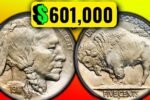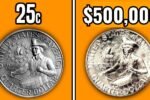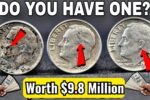In the fascinating world of rare coins, few discoveries spark as much excitement as the legendary 2000-P Sacagawea Dollar Mule Error. This isn’t just an oddity for collectors—it’s a minting mishap so rare and valuable that it has sold for as much as $72,000 at auction. And believe it or not, there’s still a chance one could be hiding in an old coin jar, a forgotten drawer, or even everyday pocket change. If you’ve ever come across a golden dollar coin from 2000, now’s the time to take a closer look.
What Exactly Is a “Mule Error”?
In coin collecting, a “mule” refers to a rare error where two mismatched dies—meant for different coins—are accidentally paired together during minting. In this extraordinary case, the obverse (front) of a Washington quarter was mistakenly struck with the reverse (back) of a Sacagawea dollar, all on the golden-colored planchet intended for dollar coins.
The result? A coin that looks like a Sacagawea dollar in size and color but features George Washington’s portrait on one side and the flying eagle design on the other. It’s like stumbling upon a mythical two-headed creature—except this one could be worth a small fortune.
Just How Rare Is This Coin?
Experts estimate that only 50 to 100 of these mule errors were ever produced, and not all have been discovered. Some were found in bank rolls, vending machines, or even ordinary change, making it possible that more are still out there waiting to be found. Depending on their condition and certification, authenticated examples have sold for anywhere between $30,000 and $72,000.
How to Identify the 2000-P Mule Error
| Feature to Check | What to Look For |
|---|---|
| Obverse (Front) Design | George Washington’s portrait (like a quarter), not Sacagawea. |
| Reverse (Back) Design | Standard Sacagawea dollar design: flying eagle with 17 stars. |
| Date Placement | “2000” appears in the quarter’s style (lower right on front), not a dollar’s. |
| Mint Mark | Small “P” (Philadelphia Mint) near Washington’s bust. |
| Size & Color | Golden hue and larger size of a dollar coin (not quarter-sized). |
Why Is This Coin So Valuable?
The staggering value comes down to rarity and human error—two things that make collectors go wild. The U.S. Mint has strict quality controls, making such a mistake almost unthinkable. Yet, somehow, this hybrid coin slipped through, turning an accidental misprint into a modern numismatic treasure.
What to Do If You Think You’ve Found One
If you’re holding a coin that matches all these details, here’s what you should do next:
- Don’t spend it! Treat it with extreme care.
- Avoid cleaning it or handling it with bare hands—oils from your skin can damage the surface.
- Store it safely in a soft cloth or protective holder.
- Get it authenticated by a professional grading service like PCGS or NGC. Certification not only confirms its legitimacy but can also maximize its value if you decide to sell.
The Thrill of the Hunt
The 2000-P Sacagawea Mule Error isn’t just a rare coin—it’s a real-life treasure hunt. In an age of digital payments and automated minting, the idea that a $70,000 mistake could still be out there, waiting to be found, is nothing short of thrilling.
So go ahead—check your old coin collections, raid the piggy bank, or sift through that jar of spare change. Who knows? That odd-looking golden dollar might just be your ticket to an incredible windfall.




